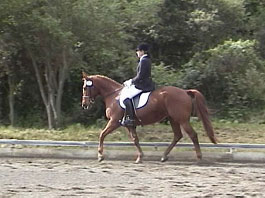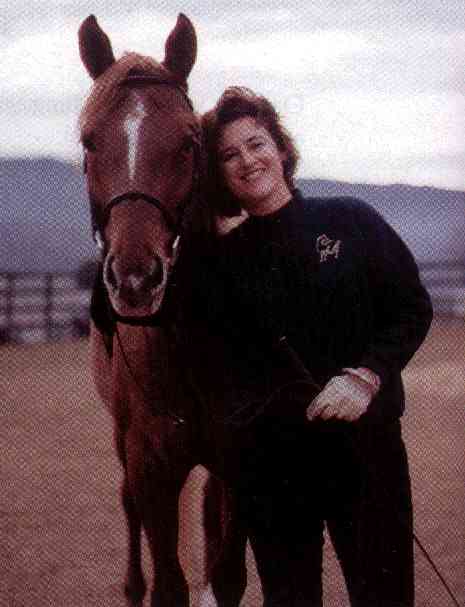|
Guidelines for Long-Term
Soundness

A true horseman takes into account
whether or not the work will contribute to the horse's
long-term mental and physical soundness and works within
the limitations of each horse.
|
DAP or Diagonal Advanced Placement
   
While trotting, DAP describes one foot of a diagonal
pair landing a fraction of a second before the other
foot. |
|
Riding Basics

The first priority in riding well is to preserve and extend the
useful life of the horse. |
Finding the
Tempo
 The rider must first address his own
imbalances that contribute to tension and imbalance in
the horse. Once his own balance is developed he can
begin to address imbalance in the horse. The rider must first address his own
imbalances that contribute to tension and imbalance in
the horse. Once his own balance is developed he can
begin to address imbalance in the horse. |
|
Horse's Balance
 The
Horse’s Head and Neck in Relation to Balance. The
Horse’s Head and Neck in Relation to Balance. |
The History of
Academic Equitation
 
What is the
Difference Between A Dressage Horse and a
Sport Horse? |
|
Visual Points of
the Moving
Horse

Visual points of the correctly and incorrectly moving
horse. |
Gimmicks of Force
 Some
riders do not understand how to help the horse relax and
find its balance, so they resort to force of one form or
another to manually get the horse’s head down. Some
riders do not understand how to help the horse relax and
find its balance, so they resort to force of one form or
another to manually get the horse’s head down. |
|
Contact
 What
it is, How to Create it, How to Improve it. What
it is, How to Create it, How to Improve it.
|
Toe Flip Animation
 As
the horse’s balance improves the toe flipping ceases,
even at the lower levels. As
the horse’s balance improves the toe flipping ceases,
even at the lower levels. |
|
The
Horse’s Analysis of Classical Dressage
Your horse can
recognize good riding, can you? For the answer to this
question, look to the horse! |
Practical
Horseman Magazine Article
 "Amateur
Status - What Would Have Helped Me" by Erin Bentley
Klosterman "Amateur
Status - What Would Have Helped Me" by Erin Bentley
Klosterman |
|
Definition of
Classical Dressage
 Classical
dressage can be translated, "fine training" - capriole,
piaffe, levade - yet it’s more than that. Classical
dressage can be translated, "fine training" - capriole,
piaffe, levade - yet it’s more than that. |
The Training Scale
 An overview of the Classical Training Progression
An overview of the Classical Training Progression |
|
Lynne Sprinsky has graciously allowed me to include her
articles,
Understanding the
Role of Tempo in Achieving Relaxation for the Horse. |
|

![]()